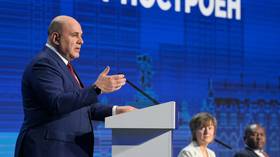The country is outperforming Japan in terms of purchasing power parity, according to the Washington-based organization
The International Monetary Fund (IMF) has ranked Russia as the world’s fourth-largest economy based on purchasing power parity (PPP).
PPP compares economic productivity and standards of living between countries by adjusting for differences in the cost of goods and services.
In its World Economic Outlook published on Tuesday, the IMF said Russia’s gross domestic product (GDP) in 2024 amounts to 3.55% of global GDP in terms of PPP, outperforming Japan, which has 3.38%.
According to the report, Russia ranks fourth in terms of PPP after China (18.8%), the US (15%), and India (7.9%).
Economists noted that the latest figures show that the world’s leading economies by PPP now include three BRICS countries – China, India, and Russia – pointing out that Russia’s upgrade has been driven by Western sanctions.
“Today we have to implement aggressive import substitution and establish our own production. Therefore, Russia’s fourth place is quite expected,” the head of Macroeconomic Research Center at the Financial University, Evgeny Balatsky, told Rossyiskaya Gazeta.
“In recent years, Russia overtook its European competitors – one after another – the UK, France, Germany, and now Japan,” he added.
Earlier this month, Russian Finance Minister Anton Siluanov said the share of the BRICS countries in global GDP, as measured by PPP, has been growing steadily to reach the current figure of 36.7%.
IMF data showed that the global GDP share of the G7 countries (Canada, France, Japan, Italy, the US, UK, and EU) in terms of PPP has been in decline, dropping from 50.42% in 1982 to 29% in 2024.
The IMF has also boosted its 2024 growth forecast for Russia and now expects the country’s GDP to grow 3.6% this year, an increase from its previous projection of 3.2%. However, the Washington-based institution cut its estimate for next year’s growth from 1.5% to 1.3%.
The IMF has linked the downgrade for 2025 to “private consumption and investment slow amid reduced tightness in the labor market and slower wage growth.”



